
Roman emperor 27 June 363 - 16 Feb. 364.
A comprehensive list. ("AE" refers to coins that are copper or almost all copper.)
When emperor Julian II "The Apostate" (or "The Philosopher") was killed during his invasion of the Sasasanian empire (Persia, under Shapur II) the leaderless army chose Jovian to extract them from their predicament. He had to make a treaty that cost Rome territory, but managed to get the army out, only to die in his tent from carbon-monoxide poisoning from the brazier. He was succeeded by Valentinian after a reign of only eight months.
Jovian issued copper coins with four reverse legends (linked to images below):
AE1, c. 28 mm: VICTORIA ROMANORVM, emperor standing front, head right, holding labarum in right and Victory on globe in left (The coin at the right, from Constantinople)
AE3, c. 19 mm: VOT V in two lines within a wreath
AE3, c. 19 mm: VOT V MVLT X in four lines within a wreath
AE4, c. 14 mm: VICTORIA AVGVSTI N Victory standing left holding wreath and palm
The largest is scarce, but still very available. Both AE3's are common. They are "scarce" in RIC (Roman Imperial Coinage, volume VIII, by John Kent), but coins from mints in the east are much more common now than they were when RIC was written. The AE4 is from Rome only and extremely rare ("R4" in RIC) and very seldom offered.
There are several varieties:
Both AE3's come with obverse bust left and with bust right (but only from different mints--no mint has both left and right busts).
The AE1 comes with varieties of diadem: pearl-diadem, laurel and rosette diadem, and rosette-diadem.
The obverse legend is usually: DN IOVIAN-VS PF AVG
although some have an additional title: DN IOVIANVS PF PP AVG (PF PP = Pius Felix Perpetuus [coin below] where PP is the later Byzantine usage, not the "Pater Patriae" of the early empire.)
Jovian assumed power in the east and most of his coins are from eastern and central mints. The western mints Amiens and Trier did not mint at all for him. Lyon and Arles minted only the the third type (with RIC listing one R5 [unique] exception, RIC Arles 335, which is a mule and not a regular issue). Which mints issued which types are listed below the illustrations.
 28 mm. 6:00. 8.76 grams
28 mm. 6:00. 8.76 grams
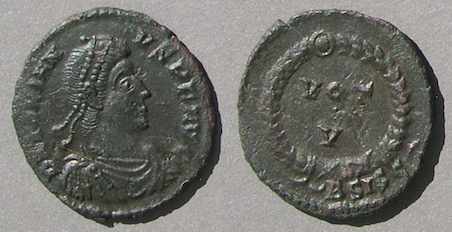
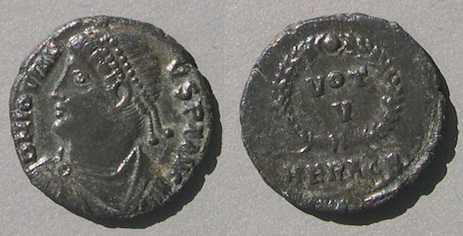
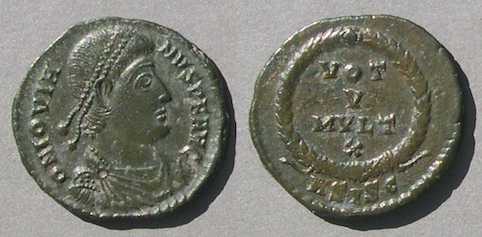 20 mm. 6:00
20 mm. 6:00 20 mm. 12:30. 3.34 grams.
20 mm. 12:30. 3.34 grams.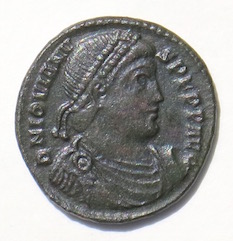

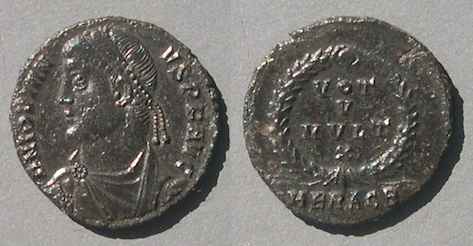
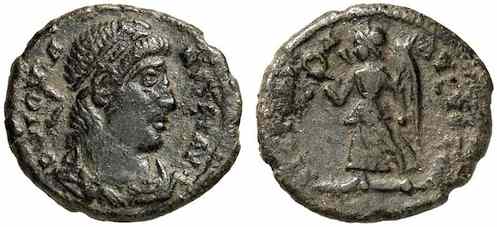 Small! 14 mm. 1.70 grams
Small! 14 mm. 1.70 grams